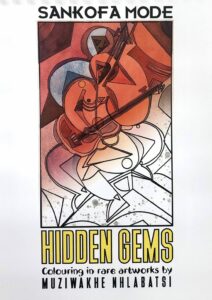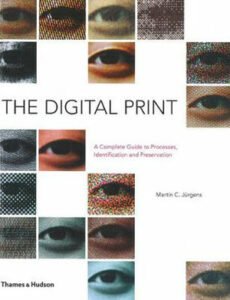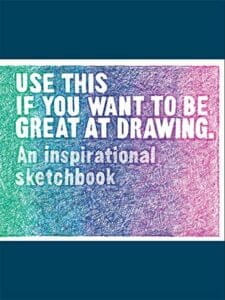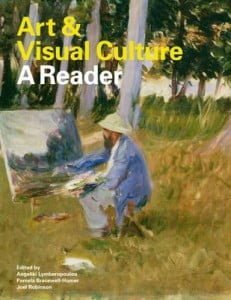Caps: Design Grade 12 Learner’s Guide
Original price was: R280.R150Current price is: R150.‘The first ever full colour Design textbook designed for designers by designers’
Available in English and Afrikaans
Showing 1–16 of 70 results

‘The first ever full colour Design textbook designed for designers by designers’
Available in English and Afrikaans

‘The first ever full colour Design textbook designed for designers by designers’
Afrikaans Version
Available in English and Afrikaans
 Out of stock
Out of stock‘The first ever full colour Design textbook designed for designers by designers’
Afrikaans version
Available in English and Afrikaans
 Out of stock
Out of stock‘The first ever full colour Design textbook designed for designers by designers’
Afrikaans version
Available in English and Afrikaans
 Out of stock
Out of stock
Amy Dempsey unravels the all-too-often daunting language of modern art by mapping the styles, schools and movements that help us understand modern and contemporary art, from Impressionism in the 19th century to Destination Art in the 21st.

The Power of Making is a joint publication between the V&A and the Crafts Council, continuing a long standing collaboration on craft and making. This fascinating book features an introduction by curator and educator, Daniel Charny, alongside contributions from international authors that explore contemporary attitudes towards skill, and the potential that skilled making offer the arts and creative industries. Seemingly disparate objects are brought together in a ‘cabinet of curiosities’ to unite and reinforce creative, cultural, social and educational points of view all offering different ways of understanding the potent power that comes with making. The book also poses incisive questions about the increasing distance people have from making, and the impact that deskilling and the deterioration of making knowledge may have on cultural production and society.

Revealing the techniques and ideas behind inspirational works, the book will set you on the path to making your own great drawings.

The greatest form of wisdom lives inside us and Journaling is an amazing way to tap into our own brilliance. We colour-in, expressing our unique creativity and allow our minds to reflect & relax. The Sankofa Mode Hidden Gems book is the coming together of 3 beautiful and empowering elements; Colouring-in, Journaling & the wisdom of Proverbs from various tribes across Africa.
Containing colouring artworks designed by the legendary veteran illustrator Muziwakhe Nhlabatsi (born 1954) from South Africa, these detailed line artworks bring together tribal aesthetics from all over our ‘Colourful continent’. By colouring-in the artworks you get to collaborate with an esteemed African Artist and engage with a broad range of African Cultural Aesthetics.

This invaluable resource demystifies the complex, rapidly changing, and sometimes confusing world of digital print technologies. It describes the major digital printing processes used by photographers and artists over the past forty years, explaining and illustrating materials and their deterioration, methods of identification, and options for acquiring and preserving digital prints. A removable chart provides a ready reference for identifying specific materials.

The latest instalment of this indispensable survey of contemporary drawing, chosen by the world’s leading art experts
Over the past 50 years, drawing has been elevated from a supporting role to a primary medium, ranking alongside painting as a central art form. Since the publication of Vitamin D (2005) and D2 (2013), contemporary artists have continued to explore drawing’s possibilities – from intimate to large-scale works, in a diversity of mark-making processes and materials. Vitamin D3 showcases more than 100 such artists, nominated by more than 70 international art experts.

Inspired by modern masters, Use This if You Want to Be Great at Drawing is a playful introduction to contemporary drawing styles, techniques and ideas.
This sketchbook features thought-provoking prompts and eye-popping illustrations to sharpen your skills and unlock the outer limits of your imagination.

A Labour of Love offers a new look at contemporary South African Art in the 1980s. This publication contains, alongside recently discovered works by young South African artists, new essays by international art specialists, interviews with artists, previously unpublished archival material, and more than 300 illustrations of artworks.

Akademie X: Lessons in Art + Life brings together a faculty of artists and writers from across the globe, including high profile art educators, such as Marina Abramovic, Carol Bove, Mark Dion, Olafur Eliasson, Dan Graham, Joan Jonas, Miranda July, Bob Nickas, Raqs Media Collective, Neo Rauch, John Stezaker, Richard Wentworth and Christopher Williams.
 Out of stock
Out of stockThis innovative book is the first to provide a fun, interactive way to learn about architecture. Filled with an array of beautiful and elegant drawings, it poses all manner of architectural challenges for the user: from designing your own skyscraper to drawing an island house or creating a Constructivist monument, plus many more.

Exploring Art and Visual Culture: A Reader brings together essential primary texts by artists, critics and art historians ranging from the medieval period right through to our own times. There is no other reader available that covers such an extensive period. Selected by leading academics in their field, and published in conjunction with the Open University, the reader will be an essential source-book for every student of art history as well as all those seeking a greater understanding of art and of the cultural and historical context in which it is made.
No products in the basket.